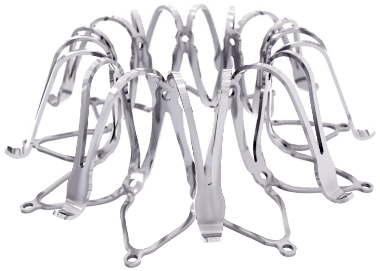 Corvia Medical has been granted CE mark approval for its InterAtrial shunt device (IASD). The IASD is a transcatheter device designed to treat heart failure with preserved ejection fraction (HFpEF), previously called diastolic heart failure.
Corvia Medical has been granted CE mark approval for its InterAtrial shunt device (IASD). The IASD is a transcatheter device designed to treat heart failure with preserved ejection fraction (HFpEF), previously called diastolic heart failure.
David Muller, director of Cardiac Catheterization at St Vincent’s Hospital in Sydney, Australia, comments, “Patients with HFpEF have waited many years for an effective treatment, and the CE mark ensures availability of a treatment that provides hope to a large group of heart failure patients.”
The results of the 64-patient CE mark study, the REDUCE LAP-HF TRIAL, were recently published in The Lancet and showed that following IASD implantation, patients had significantly fewer heart failure symptoms and were able to exercise significantly longer, resulting in a better quality of life. At six months post-implantation, median New York Heart Association functional class improved from 3 to 2 (p<0.0001), mean quality of life measurement (Minnesota Living with Heart Failure (MLWHF) questionnaire) improved from 49 to 36 (p<0.0001), mean six-minute walk distance improved from 313 meters to 345 meters (p=0.0023) and mean exercise duration improved from 7.3 min to 8.2 min (p=0.0275). Device patency (blood flow from the left to right atria) was sustained at six months.
The company also announced that the first group of patients have been enrolled in the follow-on REDUCE LAP-HF I TRIAL, a prospective, multicentre, randomised controlled study to evaluate the IASD in patients at up to 20 sites in the USA and up to eight sites outside the USA.
Rami Kahwash, heart failure cardiologist and principal investigator at the Ohio State University Richard M Ross Heart Hospital (Colombus, USA), randomised the first patient in the USA. “Finding new and effective treatment options for patients with HFpEF is crucial because none of the therapeutic treatments that work for systolic heart failure are effective for HFpEF,” comments Kahwash. “I have performed thousands of right heart catheterisations on patients with HFpEF only to prove the diagnosis and then walk away with nothing to offer them.” He continues, “This has made me very committed to finding hope for these patients and that is what I see in this trial.”












